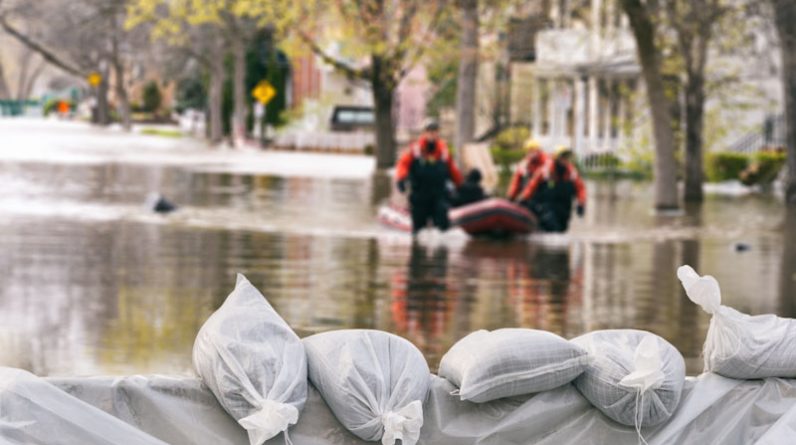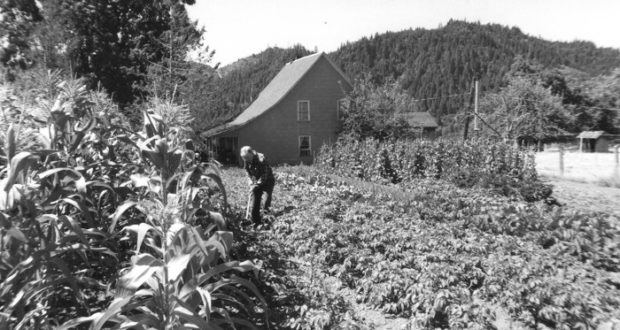This article of part 2 of a 2-part series based on the book: The Knowledge: How to Rebuild Our World from Scratch by Lewis Dartnell, scientist, writer, and UK Space Agency research fellow at the University of Leicester. (Dartnell, The Knowledge: How to Rebuild Our World From Scratch, 2014)
Substances (continued)
- Alkalis – Dartnell points out that life not only needs water to grow and reproduce, it also requires “Goldilocks” zones in regard to temperature, salinity, and pH (a scale used to measure the acidity or basicity of an aqueous solution). (Dartnell, 2014) Therefore, both alkalis, or bases, and acids are useful for food preservation. Alkalis are substances that react with acids, have a pH greater than 7, and have a low concentration of hydrogen atoms. (Wikipedia, Alkalis, 2023)
- Lime (calcium carbonate or ag lime) will probably be the first thing recovering civilization will need to start mining and processing because it and its products are needed as a soil additive to balance the pH of acidic soil, to treat drinking water, make soap, concrete, glass, and smelt metals. (Wikipedia, Calcium Carbonate, 2023)
- Calcium oxide, burnt lime, or quicklime is obtained by burning lime in a kiln at 900 °C or hotter. It is used to prevent the spread of disease and control the odor in graves. It is caustic and reacts with water producing heat. It would most easily be produced post-apocalypse with the mixed-feed shaft kiln. (Wikipedia, Calcium Oxide, 2023)
- Calcium hydroxide or hydrated lime would be used to make concrete, mortar, and whitewash to cool buildings in hot weather, Make chicken coops more sanitary. (Wikipedia, Calcium hydroxide, 2023)
- Soap – Mix an alkali such as potash from wood ash into boiling oil or fat and it becomes saponified, making soap. Dartnell points out that you shouldn’t use an aluminum container though or you’ll produce hydrogen gas which caustic and explosive.
- From wood pyrolysis, the following substances are produced: (Dartnell, Wood Pyrolysis, 2014)
- Wood Gas is a gas that can burned as fuel in stoves, furnaces, and vehicles, some of which could be readily converted to run off wood gas. Russia built wood gasifier-powered trucks when they were cut off from oil during WWII so they could use wood from the massive Taiga Forest for fuel. Wood gas can be also used to power generators. Without oil and refineries, wood gas would be the go-to fuel in areas with access to large forests. Wood gasifiers could also be modified to run off cleaner-burning coal. (Wikipedia, Wood Gas, 2023)
- Charcoal takes up less space than wood and burns hotter with less smoke, therefore charcoal works would be built near forests. Charcoal would be an important fuel for blacksmithing, foundries, and blast furnaces.
- From wood vapors, the following are produced:
- From pyroligneous acid the following substances are produced:
- Methanol or wood alcohol is used in the production of acetic acid and formaldehyde, which is used in the production of polymers. Methanol is also a fuel, component of rocket fuel and fuel additive. (Wikipedia, Methanol, 2023)
- Acetone is an important solvent used in chemistry, woodworking, cleaning, medicine, and as paint thinner. (Wikipedia, Acetone, 2023)
- Acetic Acid is an important chemical reagent used in the production of photographic film, wood glue, and synthetic fibers and fabrics. It is also a food additive and turpentine blended with grain alcohol was used as a lamp oil replacing whale oil until kerosene became available from oil. It was also used in early medicine. (Wikipedia, Acetic Acid, 2023)
- From crude tar, the following substances are produced:
- Turpentine is a solvent distilled from pine resin used to thin oil paints, furniture wax, and furniture polish. (Wikipedia, Turpentine, 2023)
- Wood-tar creosote is distilled from pyrolysis of wood and was used in early medicine as antiseptic, anesthetic, expectorant, astringent, and laxative medications. It is what preserves meat when it is smoked. (Wikipedia, Creosote, 2023)
- Plant-derived pitch is known as rosin in its solid form and was used to coat earthenware vessels to preserve wine, for waterproofing, torches, and polishing high-quality lenses and mirrors. (Wikipedia, 2023)
- From pyroligneous acid the following substances are produced:
- Lime (calcium carbonate or ag lime) will probably be the first thing recovering civilization will need to start mining and processing because it and its products are needed as a soil additive to balance the pH of acidic soil, to treat drinking water, make soap, concrete, glass, and smelt metals. (Wikipedia, Calcium Carbonate, 2023)
- Acids are substances that can donate a hydrogen ion to another substance and has a pH of less than 7. Acids would be needed to manufacture chlorine, batteries, soda ash, high explosives, and more.
- Acetic acid is produced from vinegar production (oxidation of ethanol from fermented plant products with air) or wood pyrolysis. (Wikipedia, Acetic Acid, 2023)
- Sulfuric acid – Dartnell recommends reacting iron pyrite with chorine gas using activated carbon as a catalyst to produce sulfuryl chloride and then concentrating that with distillation. Sulfuric acid would be important to keep deep cycle lead-acid batteries running to store solar energy for small solar systems, to rebuild batteries, and eventually build new ones.
- Hydrochloric acid is an important chemical reagent, especially for industrial chemistry that can be produced as a biproduct of the LeBlanc process for creating soda ash (sodium carbonate). (Wikipedia, Hydrochloric Acid, 2023)
- Nitric acid is another important reagent and aids in the manufacture of high explosives.
- Natural rubber would pose problems for most of the world until shipping was reestablished. Modern medicine and transportation would be severely limited without natural rubber. Even today the rubber industry remains extremely vulnerable to rubber tree blight because nearly all rubber trees on commercial plantations are clones and their genetics can be traced back to a handful of seeds from closely related specimens of Hevea brasiliensis. This lack of genetic diversity means rubber tree blight could bring the modern world to a screeching halt as we would not have tires for airliners, heavy trucks, medical gloves, or a surprisingly high percentage of medical products necessary to run a modern operating room.
Materials
- Clay is used in the production of:
- Pottery is among the oldest human inventions and would be among the first we would need to rebuild the world. The process of creating pottery is facilitated by the kiln and pottery wheel. Firing pottery at 1,100-1,200 °C (2,012-2,192 °F) in a kiln produces stoneware. (Wikipedia, Pottery, 2023)
- Ceramic is made by firing earthenware, brick, or porcelain at high temperature, making it hard, brittle, and heat resistant. Most ceramic is porous but can be made smooth by adding a glaze creating a glassy smooth, water impermeable, often decorative, surface that is easy to clean. (Wikipedia, Ceramic, 2023)
- Construction materials and techniques such as: cement, clay mortar, paint, adobe, wattle & daub, clay plaster, sandcasting, and brick. Because clay is largely impermeable to water, it is used to line ponds and form dam cores which would be helpful to establish small-scale hydroelectric power. (Wikipedia, Clay, 2023)
- Lime Mortar is composed of lime, fine aggregate (such as sand), and water, and is laid in between stone or brick in construction.
- After water, concrete is mankind’s most used substance, and it will be an important building material to rebuild the world. Concrete is cement (historic non-hydraulic cement can be made by mixing calcium oxide [slaked lime] with water) mixed with sand and gravel.
- Metals such as iron, s, copper, zinc brass (alloy of 67% copper and 33% zinc), bronze (alloy of copper and 12-12.5% tin) tin, and lead.
- Copper was one of the first metals worked by man during the copper age, or chalcolithic, and will be scavenged and eventually mined for use in conductive wire and electrical systems and electronics.
- Bronze is an alloy of copper and 12-12.5% tin and was harder than copper making more useful weapons, armor, and bronze castings possible, ushering in the bronze age. (Wikipedia, Bronze, 2023)
- Zinc ore (calamine) was powdered by the Romans and used to produce brass, which is an alloy of 67% copper and 33% zinc and will be a very useful metal that is soft enough to machine and rust resistant with brass alloys being used on ships and for corrosion resistant valves. (Wikipedia, Calamine (Mineral), 2023) (Wikipedia, Brass, 2023)
- The smelting of iron brought about the iron age and eventually steel, which is an alloy of iron and carbon.
- The foundry uses the furnace, crucible, and mold to produce cast metal.
- The blast furnace will enable the
- Machines would be needed to make the jump to standardized parts and mass production.
- Glass could be reused and recycled for a time, but once it runs out, we would need to start producing it. Glass is needed for labware, instruments (such as thermometers and barometers), and lenses (for eyeglasses, telescopes, and microscopes).
Medicine
- Infectious Diseases
- Childbirth & Neonatal Care
- Medical Examination & Diagnosis
- Medicines
- Surgery
- Microbiology
Power
- Mechanical Power
- Electricity
- Power Generation and Distribution
Transportation
In this chapter Dartnell examines the difficulties of keeping existing vehicles running and asks the question, “What if You Lose Mechanization?” and briefly touches on reinventing powered transportation.
Clearly, horses and draft animals would make a big comeback and see greater use. Americans who haven’t traveled abroad or researched the topic may not be aware just how recent of development automobiles are, and how many people rely on draft animals today. When WWII started, well over half of German forces relied on horses for transport and the percentage was even greater for the Allied Forces. If not for WWII, we might have still relied heavily on horses well into latter half of the 20th century.
Communication
- Writing
- Printing
- Electrical Communications
Advanced Chemistry
- Electrolysis & The Periodic Table
- Chlorine Gas – Electrolysis of brine.
- Hydrogen & Oxygen Gases – Electrolysis of water.
- Potassium Chlorate – Electrolysis of potassium chloride.
- Explosives
- Black Powder – Charcoal (fuel), potassium nitrate(oxidant), and yellow sulfur.
- Nitrocellulose – Paper or cotton oxidized with nitric acid.
- Nitroglycerin – Made through the nitration of glycerol, offshoot of saponification of soap production. Shock-sensitive and dangerous, until stabilized. Whereas a deflagrant (such as gun powder) simply burns fast and must be confined to create in explosion (such as in a pipe bomb) high explosive explode without being confined.
- TNT – Nitroglycerin stabilized with nitrocellulose. Don’t let it sit too long though or it can “sweat” nitroglycerin and become shock-sensitive and dangerous again.
- Flash Powder – Apply electrolysis to potassium chloride (a salt substitute you can buy at a health foods store) and generate the potent oxidizer potassium chlorate. Potassium chlorate can be combined with aluminum dust (paint store) to make high explosive flash powder.
- Photography
- Industrial Chemistry
Time & Space
- Telling Time
- Reconstructing the Calendar
- Navigation
Science
- The Scientific Method
- The Metric System
- Science & Technology
Interestingly, Dartnell notes that many cultures advanced to the point where they had all the knowledge necessary to make the jump to the Industrial Revolution, yet it only happened once. He opined that there are two reasons for this.
First, the civilization had to have the necessary socioeconomic conditions of high wages to justify investing in expensive machines. Who would invest in machines when they have abundant cheap labor or even free slave labor available? Second, the civilization also had to be located somewhere that had rivers and waterfalls suitable to drive the water wheels that drove early machinery.
Of all the civilizations that obtained the necessary knowledge, only 1760’s Great Britan and Europe satisfied both requirements, so that’s why it happened there and then. It is somewhat sobering to consider that if mankind loses the knowledge we know have, for even a few generations, we might never make it back to level of technological progress we enjoy today.
So now that you have a good start on a list, you can start collecting post-apocalyptic DIY project instructions so you or your posterity can rebuild the world from scratch someday. If not, I hope it was at least an interesting look at some of the key breakthroughs that would be needed to do it!
References
Dartnell, L. (2014). Food Preservation. In L. Dartnell, The Knowledge: How to Rebuild Our World From Scratch (pp. 81-82). New York: The Penguin Press.
Dartnell, L. (2014). The Knowledge: How to Rebuild Our World From Scratch. New York: The Penguin Press.
Dartnell, L. (2014). Wood Pyrolysis. In L. Dartnell, The Knowledge: How to Rebuild Our World From Scratch (pp. 116-120). New York: The Penguin Press.
Wikipedia. (2023, November 4). Acetic Acid. Retrieved from Wikipedia.com: https://en.wikipedia.org/wiki/Acetic_acid
Wikipedia. (2023, November 4). Acetic Acid. Retrieved from wikipedia.org: https://en.wikipedia.org/wiki/Acetic_acid
Wikipedia. (2023, November 10). Acetone. Retrieved from Wikipedia.com: https://en.wikipedia.org/wiki/Acetone
Wikipedia. (2023, July 5). Alkalis. Retrieved from wikipeida.com: https://en.wikipedia.org/wiki/Alkali
Wikipedia. (2023, October 24). Brass. Retrieved from Wikipedia.com: https://en.wikipedia.org/wiki/Brass
Wikipedia. (2023, November 2). Bronze. Retrieved from Wikipeida.com: https://en.wikipedia.org/wiki/Bronze
Wikipedia. (2023, September 19). Calamine (Mineral). Retrieved from Wikipedia.com: https://en.wikipedia.org/wiki/Calamine_(mineral)
Wikipedia. (2023, November 20). Calcium Carbonate. Retrieved from Wikipedia.org: https://en.wikipedia.org/wiki/Calcium_carbonate
Wikipedia. (2023, November 19). Calcium hydroxide. Retrieved from wikipedia.org: https://en.wikipedia.org/wiki/Calcium_hydroxide
Wikipedia. (2023, November 8). Calcium Oxide. Retrieved from wikipedia.org: https://en.wikipedia.org/wiki/Calcium_oxide
Wikipedia. (2023, November 10). Ceramic. Retrieved from Wikipedia.com: https://en.wikipedia.org/wiki/Ceramic
Wikipedia. (2023, October 30). Clay. Retrieved from Wikipedia.com: https://en.wikipedia.org/wiki/Clay
Wikipedia. (2023, October 23). Creosote. Retrieved from Wikipedia.com: https://en.wikipedia.org/wiki/Creosote
Wikipedia. (2023, November 17). Hydrochloric Acid. Retrieved from wikipedia.org: https://en.wikipedia.org/wiki/Hydrochloric_acid
Wikipedia. (2023, November 7). Methanol. Retrieved from Wikipedia.com: https://en.wikipedia.org/wiki/Methanol
Wikipedia. (2023, September 7). Pitch. Retrieved from Wikipedia.com: https://en.wikipedia.org/wiki/Pitch_(resin)
Wikipedia. (2023, November 10). Pottery. Retrieved from Wikipedia.com: https://en.wikipedia.org/wiki/Pottery
Wikipedia. (2023, November 8). Turpentine. Retrieved from Wikipedia.com: https://en.wikipedia.org/wiki/Turpentine
Wikipedia. (2023, October 8). Wood Gas. Retrieved from wikipedia.org: https://en.wikipedia.org/wiki/Wood_gas









